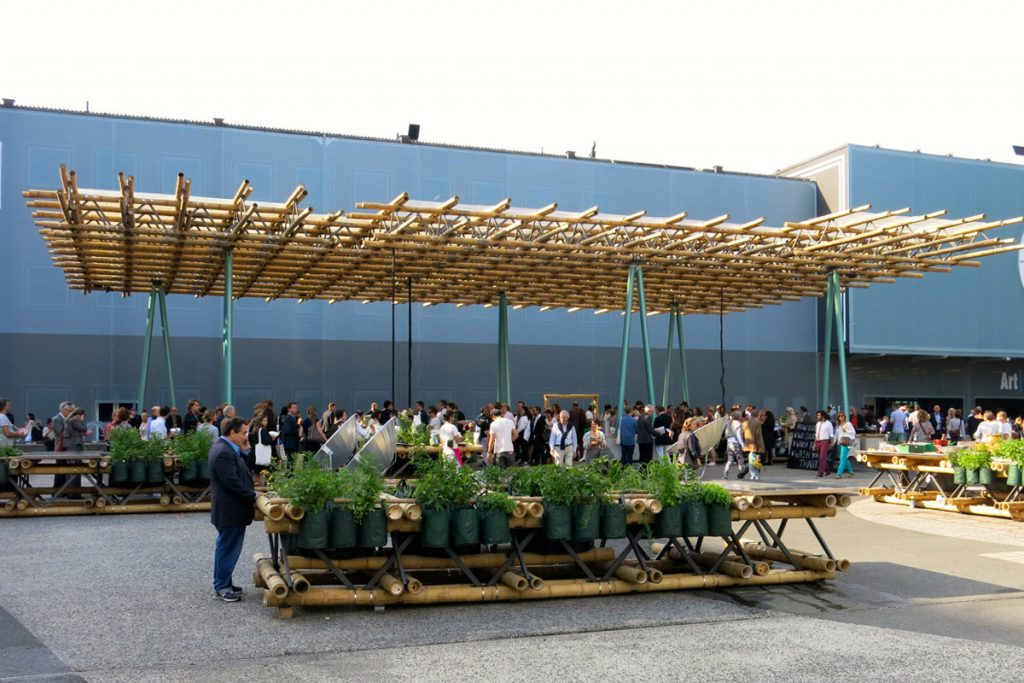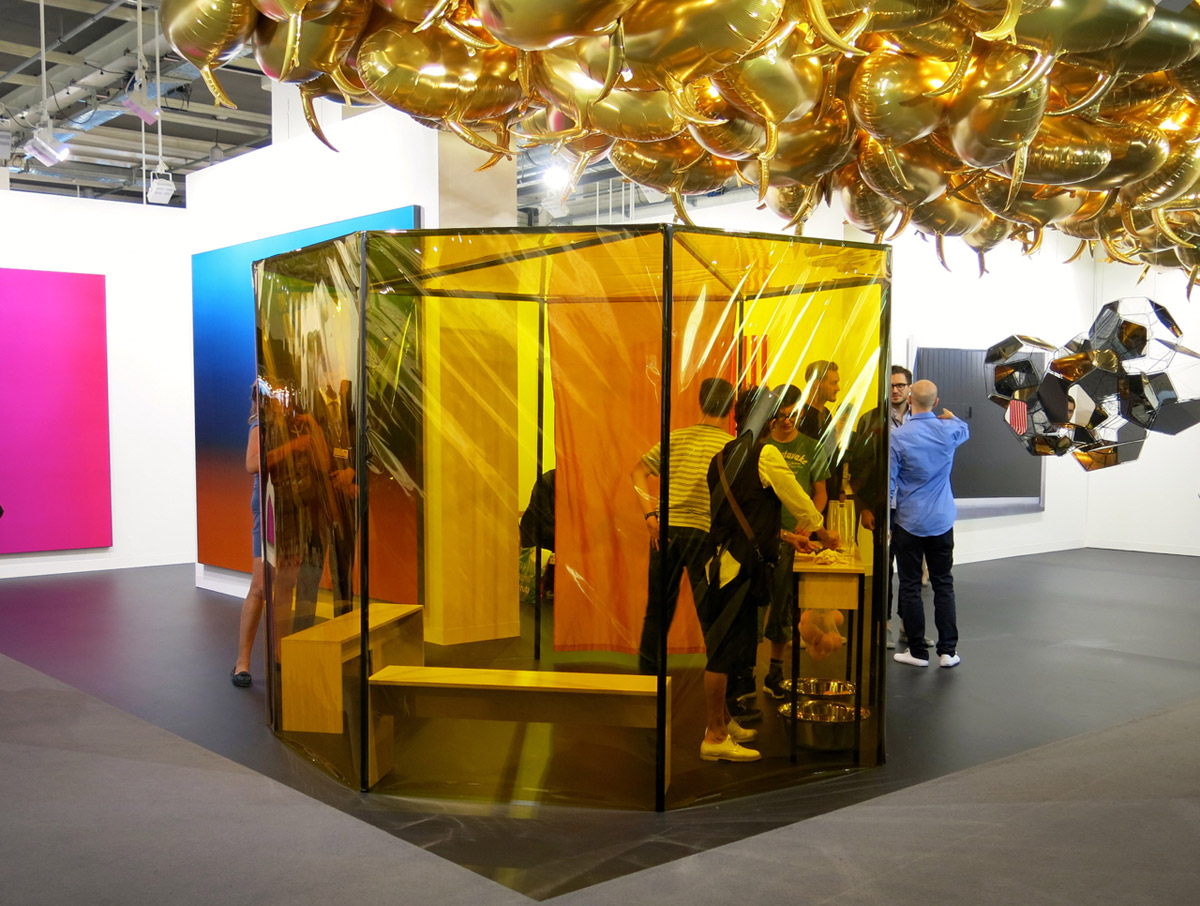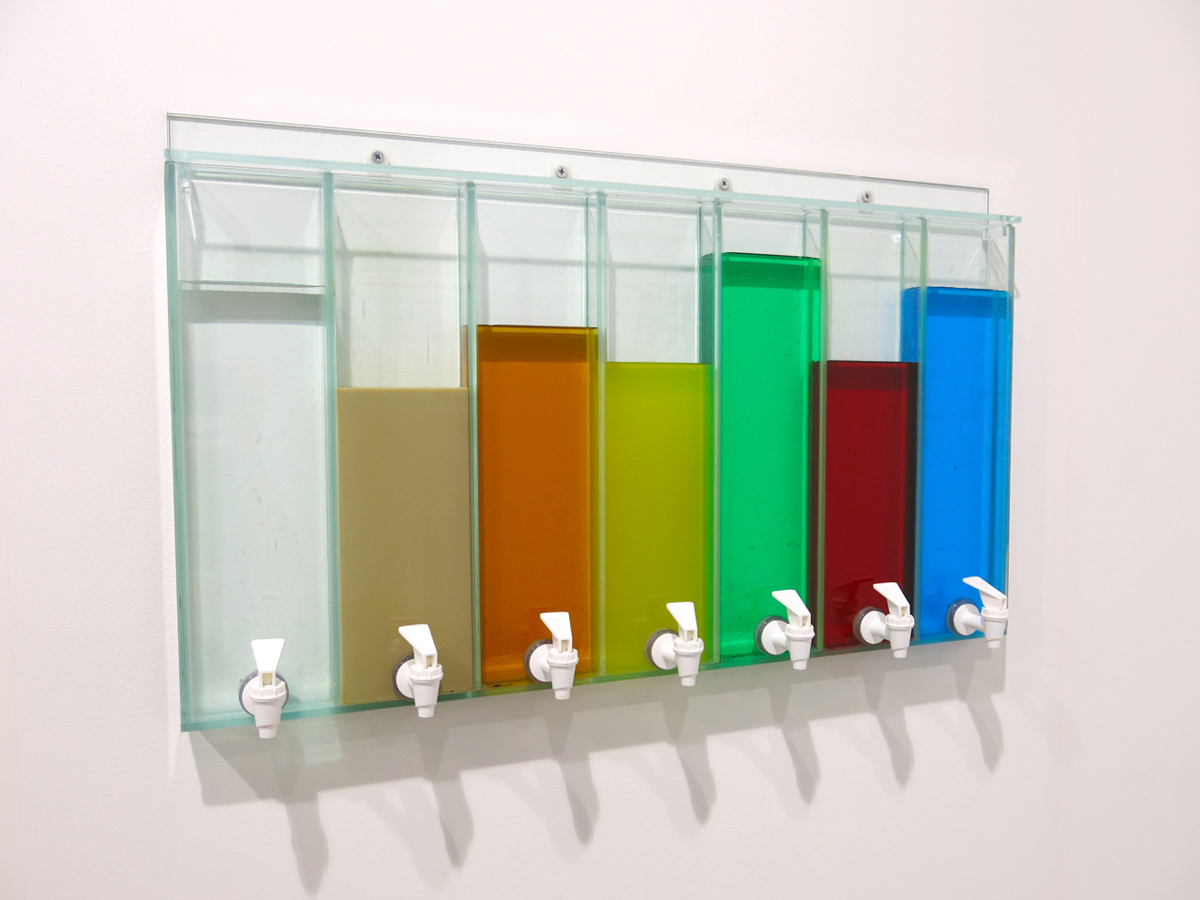Art Basel 2015: Interactive Installations
Artists bring the community together with immersive experiences

Interactive art installations can be real crowd-pleasers. Playing an active part in an artist’s vision is an interesting experience—and when it’s good, it makes participants feel that they themselves are bringing something unique to the work. At this year’s edition of Art Basel in the Swiss city, a number of artists showed works that demanded interaction. Most of them were centered around food and drink—one of the easiest ways to bring people together—and they all provided fun breaks from static installations.

The most-talked about piece at this year’s Basel was “Do We Dream Under the Same Sky,” by artist Rirkrit Tiravanija, architects Nikolaus Hirsch and Michel Müller, and chef Antto Melasniemi. The installation has its roots in Tiravanija and Kamin Lertchaiprasert’s self-sustaining artistic community “the land,” and saw Tiravanija and Melasniemi cooking Thai food in a bamboo structure on the Messeplatz. Visitors were invited to partake in the cooking and the eating, prompting questions about whether the work was art or not, though they happily lined up to do the dishes afterwards. The collaborative project is based on the idea of self-sufficiency, and the herbs used in the food were grown at the Messeplatz. After Basel finishes, the structure will be shipped to “the land” in Chiang Mai.

Catalan artist Daniel Steegmann Mangrané‘s “Orange Oranges 2” (2004), seen at the Esther Schipper gallery, lets participants make their own freshly squeezed orange juice in a tent made of an orange photographic filter. Enclosed in Mangrané’s doubly orange world, as other visitors curiously observe you from outside, the juice-making becomes performance art. And, as the gallerist pointed out, you get delicious juice, which would cost you 5 CHF at the Art Basel bar, for free.

David Shrigley‘s spot-on, hilarious illustrations are always enjoyable, but his sculptures are less well-known. In the Unlimited sector, which hosted many of the best pieces at Art Basel this year, his “Life Model” (2012) brought art school to the art exhibition. A three meter high sculpture with comically large ears was surrounded by easels on which people could create their own artworks, which were then hung on the wall. The sculpture sometimes blinked or peed, making the installation feel like a knowing wink to those who think art is pretentious.

Brazilian art collective Opavivará! aimed to help people relax with its “Formosa Decelerator” (2014), which featured 16 hammocks that were almost always occupied. Referencing the hammocks used by indigenous Brazilians to sleep, the work also nodded to the herbs used by the country’s shamans—the center of each hammock was set with tea-making ingredients. The work was originally conceived for the Taipei Biennial last year and was meant to create a spirit of “sharing and contemplation,” a theme that ran through all of Art Basel this year.

Opavivará! were also behind one of the (understandably) most popular installations at Basel, a color-coded collection of different spirits that were offered to visitors. With a selection that included whisky, vodka, limoncello, Bailey’s and a number of other tipples, the installation (at Rio de Janeiro-based A Gentil Carioca gallery’s booth) definitely did bring people together.
Images by Cajsa Carlson












